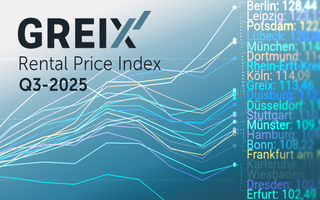New database brings transparency to Africa’s public debt
The Kiel Institute for the World Economy presents a major collaborative project: The African Debt Database (ADD)—a globally unique dataset on the public debt of African countries. It covers more than 50,000 individual loans and securities worth over USD 6.3 trillion, offering for the first time a comprehensive picture of the rapidly expanding domestic debt markets across the continent. A related research paper was also published.
Read Working Paper:
The new African Debt Database closes a major knowledge gap in global financial statistics. It traces both domestic and external debt instruments issued by 54 African governments between 2000 and 2024—altogether more than 50,000 contracts amounting to about USD 6.3 trillion. For each instrument, ADD provides harmonized micro-level information on currency, maturity, interest rate, creditor, and instrument type, making it the most comprehensive and granular dataset to date on Africa’s sovereign borrowing landscape.
Africa’s debt markets are larger and more complex than previously known
The database and the related research paper was created in painstaking, collaborative work by a team of researchers of the Geneva Graduate Institute, Global Sovereign Advisory, the Kiel Institute, the UN Economic Commission for Africa, the World Bank, Aix-Marseille School of Economics, and the Munk School at the University of Toronto (the contents of the paper do however not necessarily represent the views of the respective institutions).
“Building the ADD meant piecing together thousands of government documents and turning them into one coherent database. Leveraging on AI-assisted text recognition, we were able to systematize Africa’s debt data at an unprecedented level of detail.”—Niccolo Rescia, economist at Global Sovereign Advisory, speaking in personal capacity.
The analysis of the data in a research paper reveals four key stylized facts: (i) a rapid expansion of domestic debt markets, especially in middle-income countries; (ii) wide dispersion in borrowing costs and real interest rates; (iii) large cross-country variation in maturity structures and associated rollover risks; and (iv) a rising debt-service burden, particularly due to international bonds.
“The ADD makes visible how strongly African governments now rely on domestic capital markets—and how unequal the conditions are,” says Christoph Trebesch, Director of the Research Center International Finance at the Kiel Institute and co-author of the study. “The new database shows that debt transparency is feasible even in data-scarce environments, which is crucial for sound fiscal policy and macroeconomic surveillance.”
Domestic debt is rising fast—and with it the risks
The study highlights that the growing shift toward domestic debt brings new opportunities for financial autonomy, but also new risks. Short-term borrowing increases rollover pressure, while high real interest rates weigh on debt sustainability. ADD allows these dynamics to be analyzed systematically for the first time.
“Liquid domestic capital markets are key to mobilizing local savings and easing reliance on concessional finance for the continent's development agenda. By providing detailed issuance data, the ADD can strengthen investor confidence and help deepen Africa’s markets,” said Ka Lok Wong, economist at the UN Economic Commission for Africa, speaking in personal capacity.
A central goal of the project is open access: the database will be freely available online, including full documentation and source references. In doing so, it not only strengthens research and policy analysis, but also enhances public accountability and democratic oversight of government finances.






